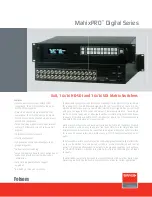
134
Step
Command
Remarks
1.
Enter system view.
system-view
N/A
2.
Enter PIM view.
pim
[
vpn-instance
vpn-instance-name
]
N/A
3.
Configure Anycast RP.
anycast-rp anycast-rp-address
member-rp-address
By default, Anycast RP is not
configured.
You can repeat this command to
add multiple RP member
addresses to the Anycast RP
set.
Configuring a BSR
You must configure a BSR if C-RPs are configured to dynamically select the RP. You do not need to
configure a BSR when you have configured only a static RP but no C-RPs.
A PIM-SM domain can have only one BSR, but must have a minimum of one C-BSR. Any router can
be configured as a C-BSR. Elected from C-BSRs, the BSR is responsible for collecting and
advertising RP information in the PIM-SM domain.
Configuring a C-BSR
The BSR election process is summarized as follows:
1.
Initially, each C-BSR regards itself as the BSR of the PIM-SM domain and sends a BSM to
other routers in the domain.
2.
When a C-BSR receives the BSM from another C-BSR, it compares its own priority with the
priority carried in the message. The C-BSR with a higher priority wins the BSR election. If a tie
exists in the priority, the C-BSR with a higher IP address wins. The loser uses the winner's BSR
address to replace its own BSR address and no longer regards itself as the BSR. The winner
retains its own BSR address and continues to regard itself as the BSR.
The elected BSR distributes the RP-set information collected from C-RPs to all routers in the
PIM-SM domain. All routers use the same hash algorithm to select an RP for a specific multicast
group.
A BSR policy enables a PIM-SM router to filter BSR messages by using an ACL that specifies the
legal BSR addresses. It is used to guard against the following BSR spoofing cases:
•
Some maliciously configured hosts can forge BSMs to fool routers and change RP mappings.
Such attacks often occur on border routers.
•
When an attacker controls a router on the network, the attacker can configure the router as a
C-BSR to win the BSR election. Through this router, the attacker controls the advertising of RP
information.
When you configure a C-BSR, follow these restrictions and guidelines:
•
Configure C-BSRs on routers that are on the backbone network.
•
Reserve a relatively large bandwidth between the C-BSR and the other devices in the PIM-SM
domain.
•
You must configure the same BSR policy on all routers in the PIM-SM domain. The BSR policy
discards illegal BSR messages, but it partially guards against BSR attacks on the network. If an
attacker controls a legal BSR, the problem still exists.
•
When C-BSRs connect to other PIM routers through tunnels, static multicast routes must be
configured to make sure the next hop to a C-BSR is a tunnel interface. Otherwise, RPF check is
affected. For more information about static multicast routes, see "Configuring multicast routing
and forwarding."
















































